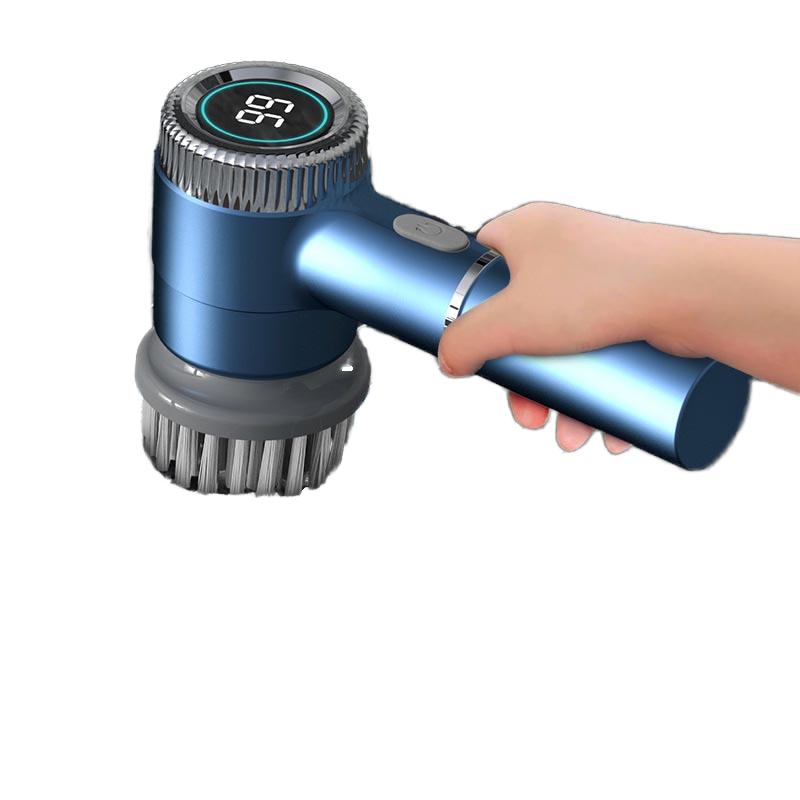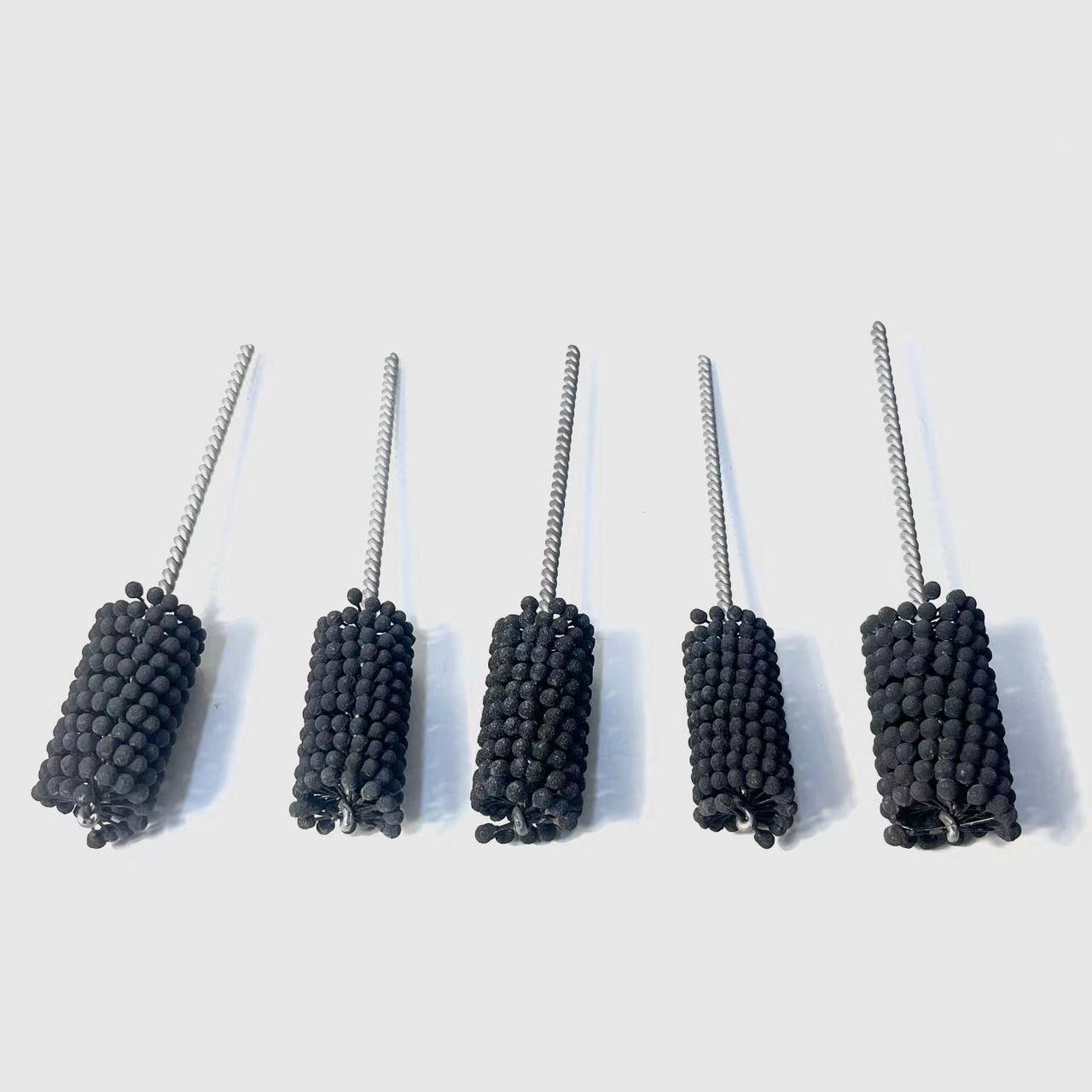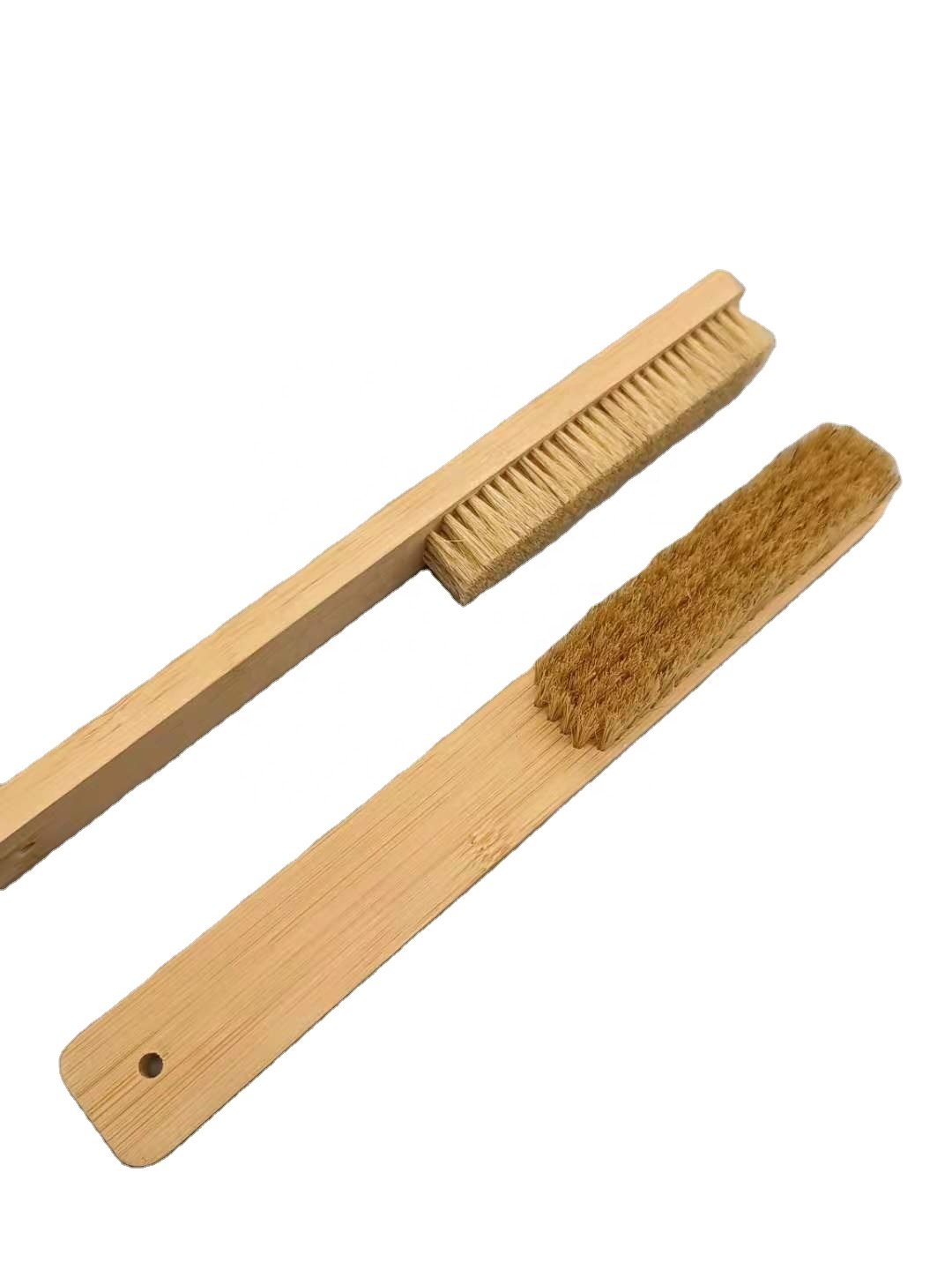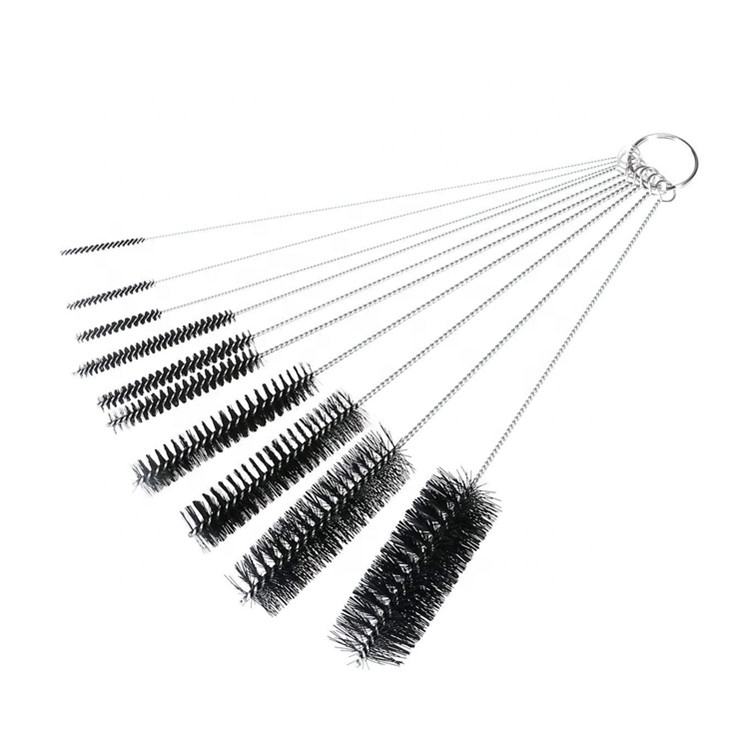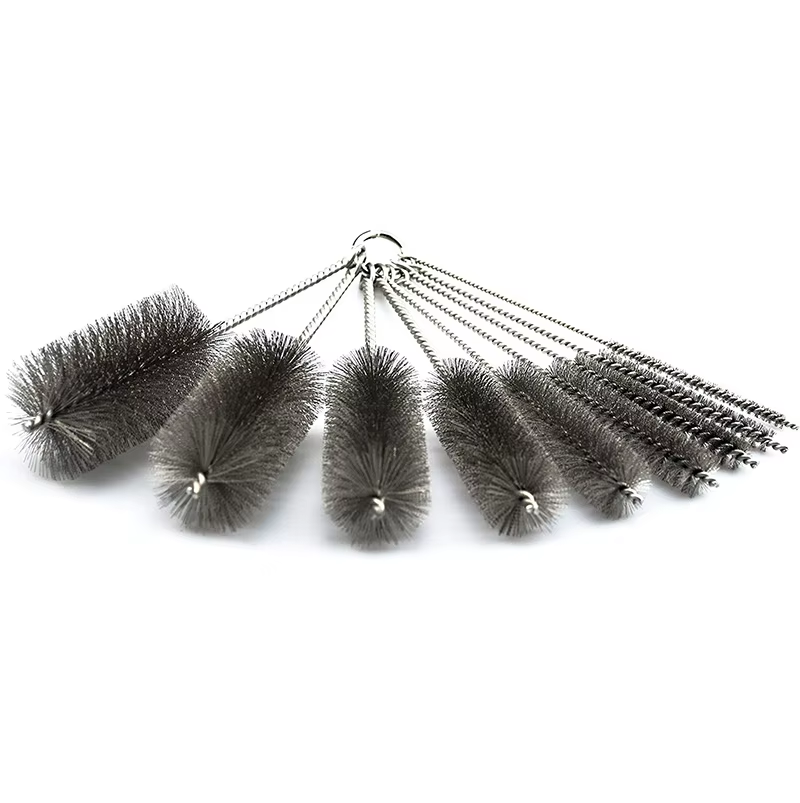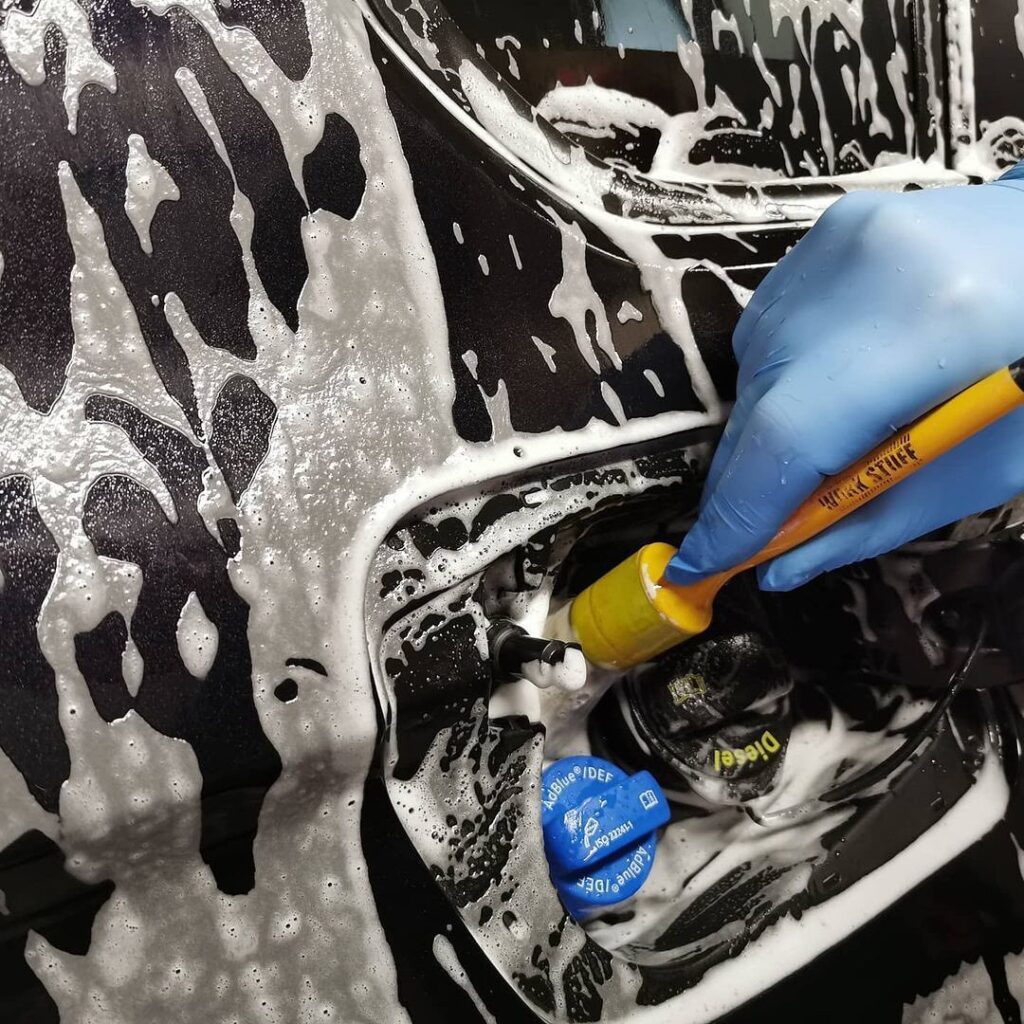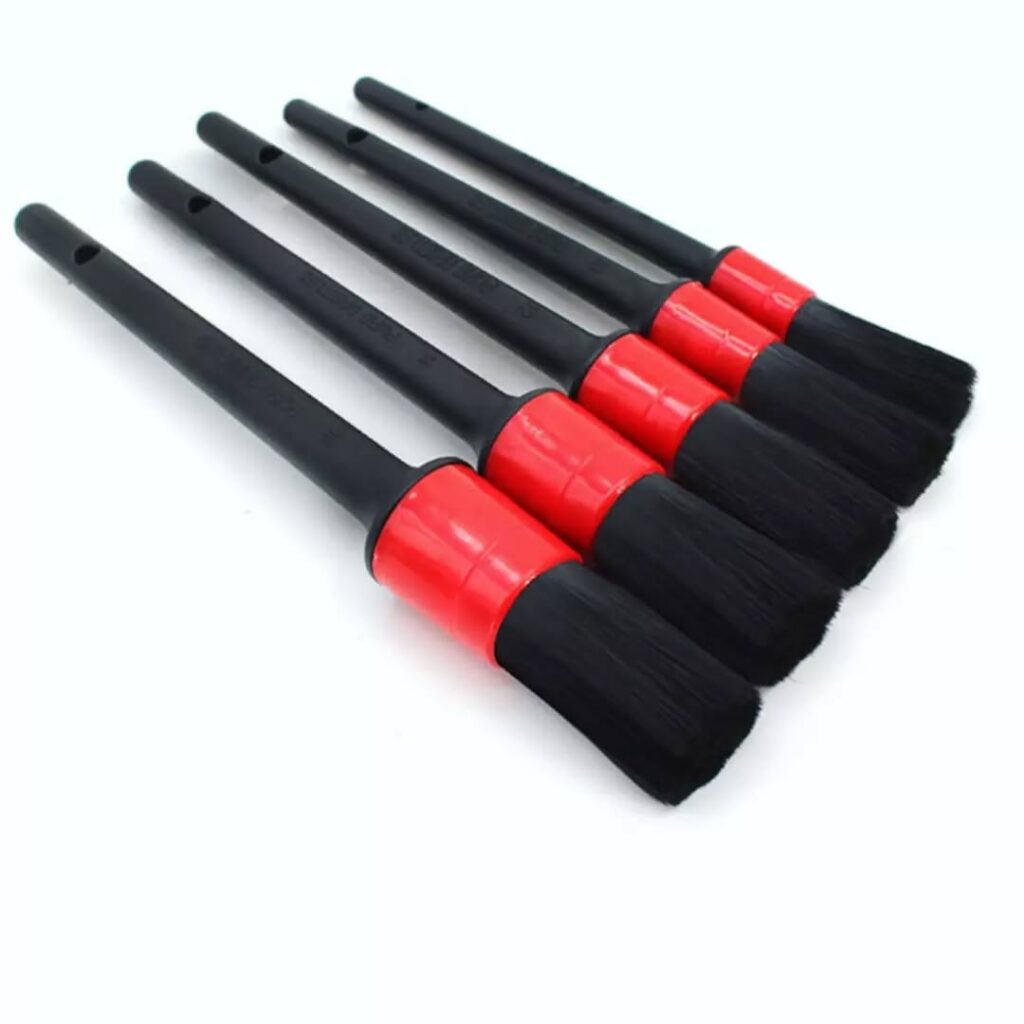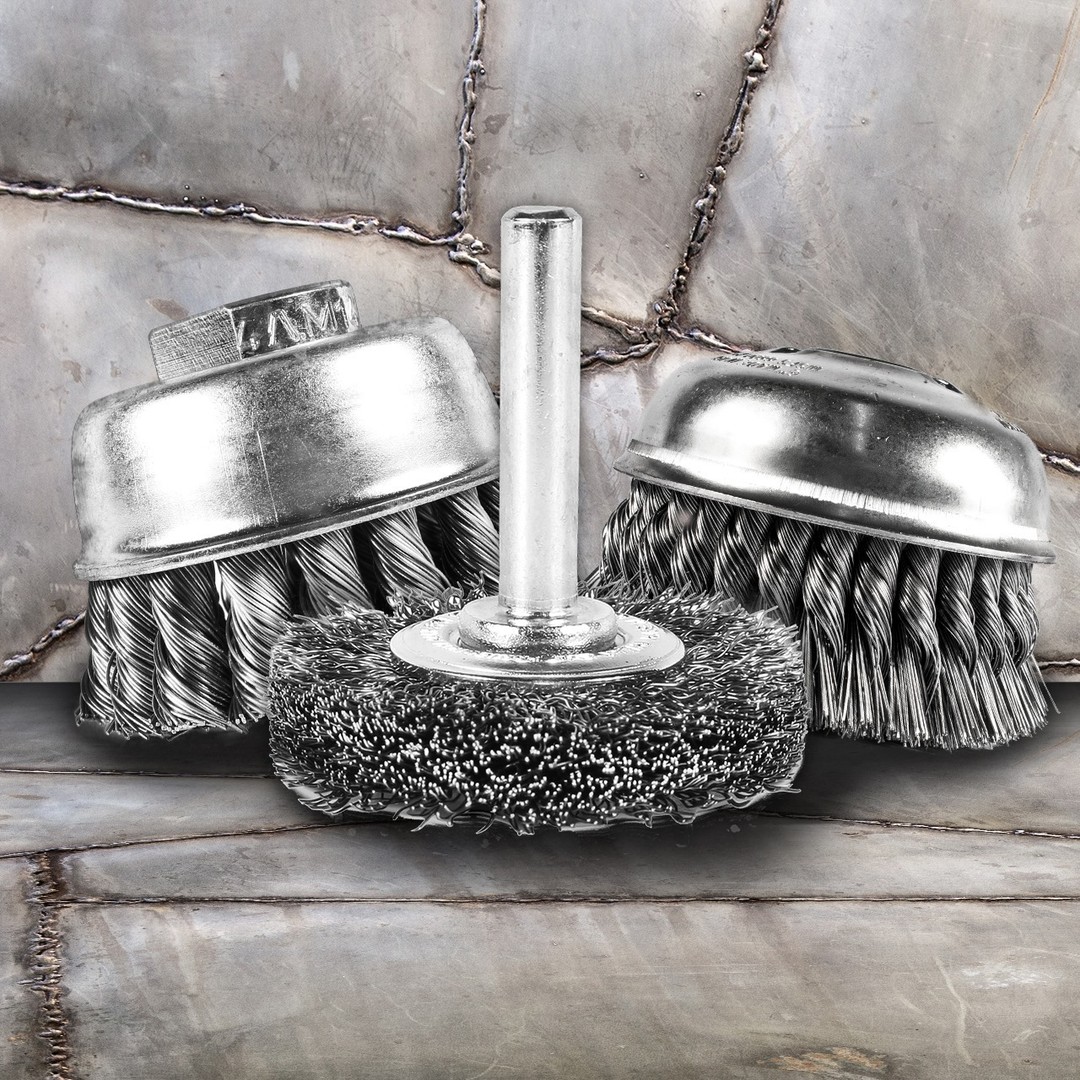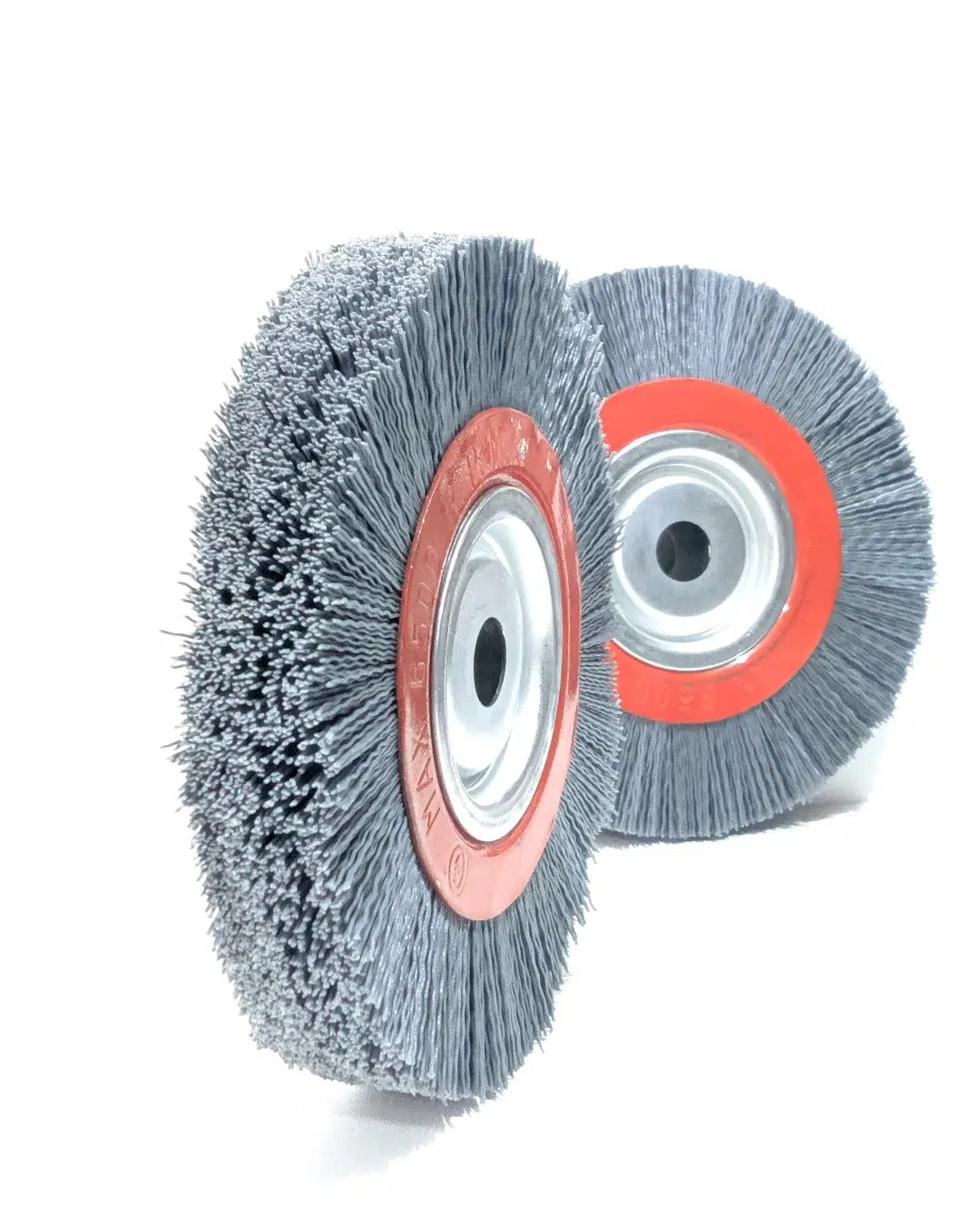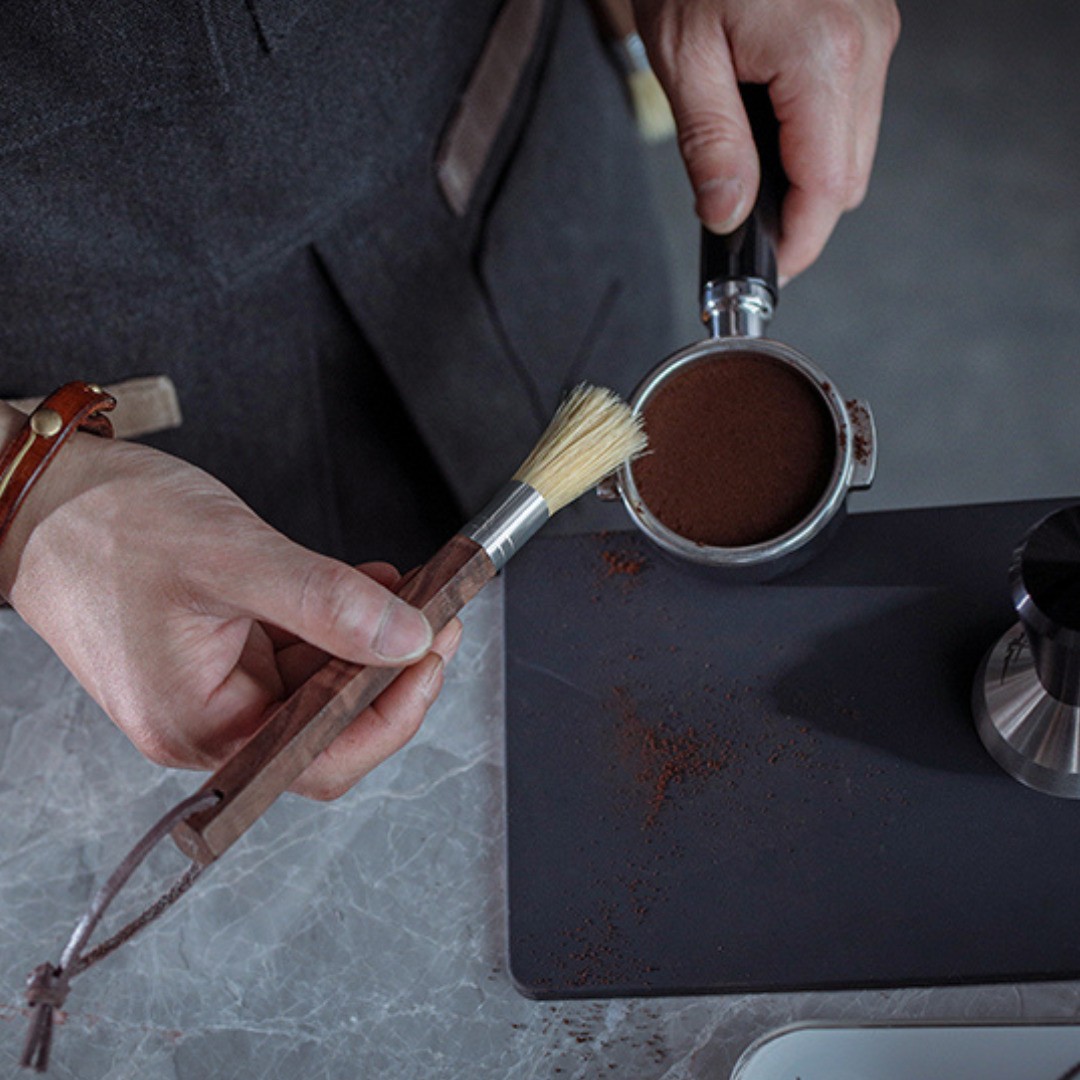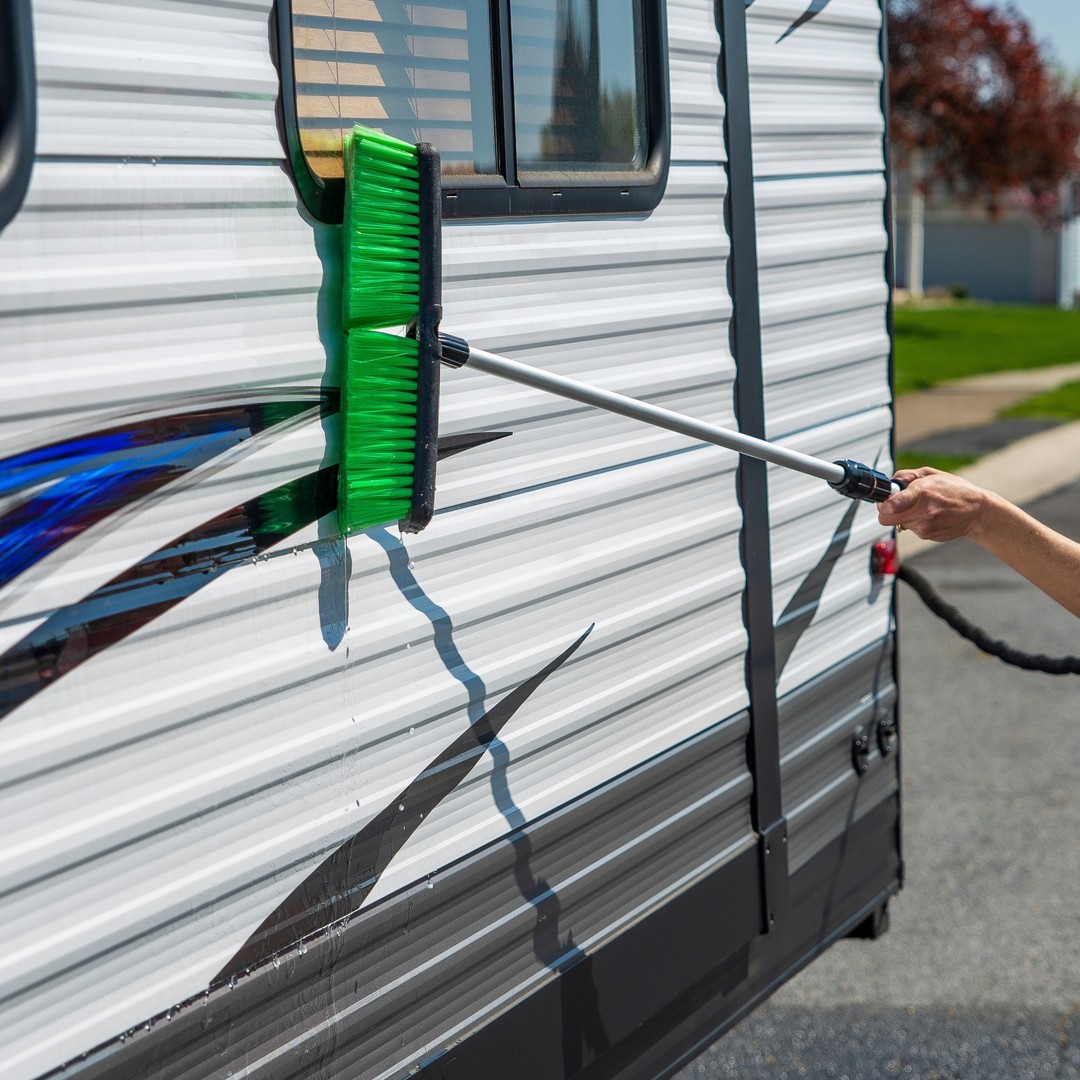Table of Contents
Introduction: The Power of Detailing Brushes in Car Care
When it comes to car care and maintenance, many enthusiasts and professionals focus on larger tools like wash mitts and microfiber towels. However, it is the smaller, precision tools that often make a significant difference in the final result. Car detailing brushes are essential instruments in ensuring a spotless, well-maintained vehicle, particularly when it comes to cleaning those hard-to-reach areas that larger cleaning tools just can’t handle. These brushes are designed to provide thorough cleaning in intricate spots, ensuring no corner, vent, or trim goes untouched.
Detailing brushes are crucial not only for achieving superior cleanliness but also for maintaining the longevity of your vehicle’s components. Whether you’re cleaning the interior surfaces, polishing the exterior, or reaching difficult spaces under the hood, detailing brushes offer unparalleled versatility and precision. In this article, we will explore how to use car detailing brushes effectively, understand their different types, and highlight the best techniques for achieving the best possible cleaning results. Get ready to enhance your car care routine with the power of detailing brushes!
What Are Car Detailing Brushes?
Car detailing brushes are specialized cleaning tools designed to reach areas of your vehicle that are often neglected by larger cleaning implements. Unlike traditional car wash tools, detailing brushes feature small, fine bristles that allow for precision cleaning in tight spaces, such as air vents, seams, and small trim pieces. These brushes come in various shapes, sizes, and bristle types, which means there is a brush for almost every type of surface and task you need to tackle.
There are several types of detailing brushes, including those designed for interior use, exterior cleaning, and even engine bay maintenance. The bristles can be made from synthetic fibers or natural materials like boar hair, depending on the brush’s intended use. The compact design and ability to target specific areas make these brushes indispensable for anyone looking to maintain a car’s appearance and function.
Why Should You Use Car Detailing Brushes?
Detailing brushes play a critical role in achieving a spotless vehicle. While larger tools like wash mitts or microfiber towels are great for cleaning broad surfaces, detailing brushes are specifically designed to clean the finer details of your car. From the dashboard to the wheels, these brushes allow you to clean areas that would otherwise be inaccessible, such as vents, trim, and engine components. Whether you are dealing with dust, dirt, grime, or other buildups, detailing brushes are perfect for tackling those tricky spots without damaging your car’s surfaces.
By incorporating detailing brushes into your routine, you can elevate your car’s appearance and give it the deep cleaning it deserves. In the following sections, we will look into the various types of detailing brushes available, discuss the best techniques for using them, and provide tips for cleaning different parts of your car. So let’s dive into the world of detailing brushes and see how they can take your car care game to the next level!
How to Use Car Detailing Brushes Effectively
Using detailing brushes effectively is key to achieving the best results in your car care routine. Let’s break down the steps to ensure that you are using these brushes correctly and safely, and that you’re getting the most out of them.
1. Preparing the Brushes and Cleaning Solution
Before you start, it’s important to prepare your detailing brushes properly. Inspect the brushes to ensure they are free from any loose bristles or damage that might cause issues during cleaning. Clean the bristles to remove any previous residue or contaminants. Next, choose a suitable cleaning solution based on the surfaces you’ll be working on. For interior surfaces, a mild cleaner or all-purpose solution might be appropriate, while for exterior or engine bay cleaning, a more specialized product may be required. Always dilute cleaning solutions according to the manufacturer’s instructions if necessary.
2. Choosing the Right Brush for the Task
Detailing brushes come in many shapes and sizes, so selecting the right one is crucial. For larger areas like the dashboard or the wheels, a brush with soft, medium bristles is ideal. Smaller brushes with stiffer bristles are better for delicate and hard-to-reach areas, such as air vents, door panels, or intricate trim pieces. Always ensure you are using the correct brush for the task to avoid damaging sensitive surfaces and achieve the best cleaning results.
3. Techniques for Effective Brush Usage
When using detailing brushes, technique plays a major role in how well the job is done. Here are a few important tips to get the most out of your detailing brushes:
Gentle, Controlled Strokes
Apply light pressure when using the brush, especially on delicate surfaces. Excessive force can lead to scratches or damage to your car’s interior or exterior. Use gentle, controlled strokes to remove dirt and grime effectively without causing harm. If necessary, repeat the process until you achieve the desired level of cleanliness.
Reaching Difficult Areas with Small Brushes
One of the greatest advantages of detailing brushes is their ability to reach tight spaces that larger tools cannot access. Use smaller brushes to clean air vents, the spaces around buttons, and narrow gaps. A back-and-forth or circular motion is ideal for loosening dirt and debris in these hard-to-reach areas.
Using Different Brush Angles
Maximize the effectiveness of your detailing brushes by experimenting with different angles. Adjusting the angle of the brush can help you clean specific areas more effectively. For instance, angling the brush diagonally can help reach corners or grooves that are difficult to clean. Explore different positions to find the most effective method for each task.
Remember to work carefully and pay attention to the surfaces you’re cleaning. With consistent practice, you’ll master the use of detailing brushes and elevate your car care routine.
Best Areas to Use Detailing Brushes
Detailing brushes can be used on both interior and exterior surfaces of your car, each serving specific cleaning purposes. Here are the key areas where detailing brushes are most effective:
1. Interior Surfaces
Detailing brushes are excellent tools for cleaning the interior of your car, especially when it comes to tight spaces and intricate components that are hard to reach with larger tools. Some of the best interior areas for using detailing brushes include:
Dashboard and Center Console
The dashboard and center console are filled with small buttons, knobs, and crevices that easily accumulate dust and dirt. A soft-bristled detailing brush can gently clean these areas without causing any damage. The small size of the brush allows you to get into tight spaces and thoroughly clean even the most intricate spots.
Vents and Crevices
Air vents and crevices are notorious for collecting dust and debris. A detailing brush with fine, soft bristles works wonders in agitating and loosening dirt from these hard-to-reach areas. Use a back-and-forth motion to thoroughly clean out the dirt from the vents and small gaps.
Upholstery and Carpets
Detailing brushes are also great for cleaning upholstery and carpets. Use a medium-bristled brush to remove embedded dirt, pet hair, and other debris from the fabric. Gentle circular motions will lift the dirt without damaging the material, restoring the fabric’s appearance and freshness.
2. Exterior Surfaces
Detailing brushes are just as useful for exterior cleaning. These brushes help you clean areas that traditional cleaning tools struggle to reach. Here are some key exterior areas where detailing brushes can be used effectively:
Wheels and Tires
Detailing brushes are essential for cleaning wheels and tires, which tend to accumulate dirt, brake dust, and grime. Use a sturdy brush to scrub the wheel spokes, and a stiffer brush for tire cleaning. These brushes will remove all the build-up, leaving your wheels and tires looking pristine.
Emblems and Badges
Small emblems and badges on the exterior of your vehicle can be tricky to clean with larger brushes. Detailing brushes with soft bristles are perfect for this task, helping you gently remove dirt and grime from these intricate areas without damaging the finishes.
Grilles and Trim
The grilles and trim pieces on your vehicle often attract dirt and grime, and detailing brushes are perfect for cleaning these areas. Use a brush with medium to stiff bristles to remove dirt from the grilles and the tight spaces around the trim, ensuring a clean, well-maintained look.
Door Jambs and Hinges
Door jambs and hinges are areas that accumulate dirt and debris over time. Detailing brushes are ideal for cleaning these tight spaces. Use a fine-bristled brush to remove dirt from the jambs and hinges, ensuring they remain clean and functional.
Cleaning and Maintaining Your Detailing Brushes
To keep your detailing brushes in top condition, regular maintenance is essential. Here are some tips for cleaning and storing your brushes:
1. Clean After Each Use
After using your detailing brushes, rinse them under warm water to remove dirt and debris. Use mild soap or brush cleaner to ensure the bristles are free from residue. Make sure to rinse until the water runs clear.
2. Dry and Store Properly
After cleaning, gently squeeze out any excess water and shake off the moisture. Allow the brushes to air dry completely before storing them. Keep them in a clean, dry area to prevent damage and prolong their lifespan.
3. Inspect Regularly
Check your detailing brushes for wear and tear after each use. If you notice frayed bristles or any damage, replace the brush to maintain optimal cleaning performance.
Extra Features of Detailing Brushes
1. Versatile Brush Sizes
Detailing brushes come in various sizes to suit different tasks. For large surfaces, use a bigger brush to cover more area, and for delicate or tight spaces, opt for a smaller, finer brush. This flexibility allows you to tackle a wide range of cleaning jobs efficiently.
2. Customizable Bristles
Many detailing brushes offer customizable bristle types and stiffness to fit specific tasks. Whether you need soft bristles for interior cleaning or stiffer bristles for exterior scrubbing, customizable options ensure you get the right brush for every cleaning challenge.
Conclusion
Detailing brushes are essential tools that provide precision cleaning for both the interior and exterior of your vehicle. They help you reach difficult areas, remove dirt and grime, and maintain a polished, clean car. By incorporating detailing brushes into your car care routine and following the tips outlined in this article, you can elevate your cleaning results and ensure a well-maintained, spotless vehicle. Whether you are a car enthusiast or a professional detailer, the right detailing brushes can make a significant difference in the quality of your work.
Frequently Asked Questions (FAQs)
1. How do I choose the right detailing brush for my car?
Choose a detailing brush based on the specific area you’re cleaning. For delicate surfaces like dashboards, opt for soft-bristled brushes, and for tough areas like wheels and tires, use stiffer bristles for better cleaning power.
2. Can detailing brushes be used for both interior and exterior cleaning?
Yes, detailing brushes are versatile and can be used on both the interior and exterior of your car. Select the appropriate brush size and bristle type for each task to ensure effective cleaning.
3. How often should I clean my detailing brushes?
It’s recommended to clean your detailing brushes after each use. This prevents build-up of dirt and residue, ensuring that your brushes continue to perform effectively and last longer.

